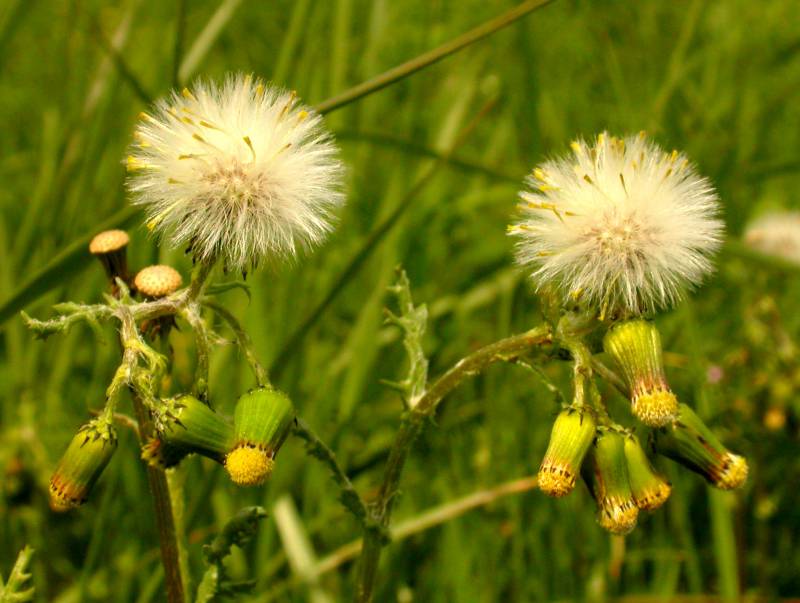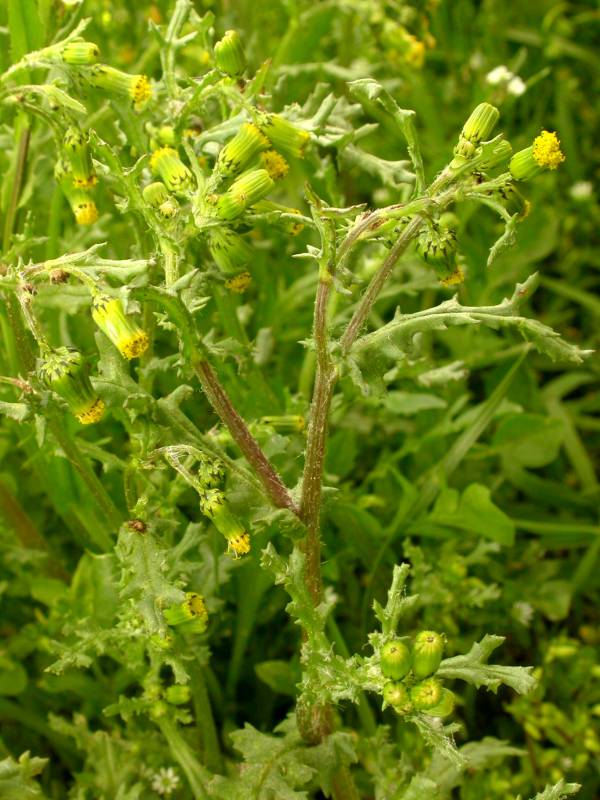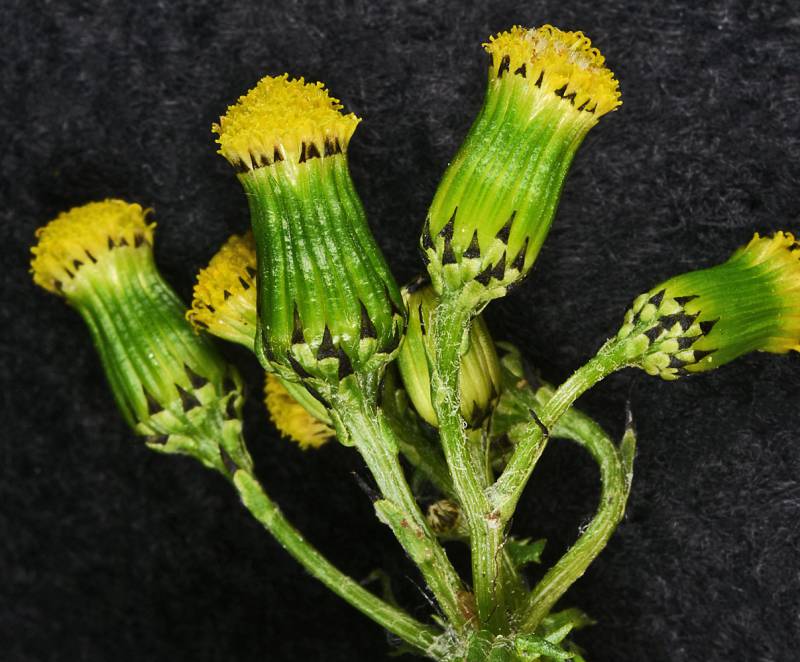Common groundsel identification and control
About this weed
Common groundsel is a non-regulated Class C noxious weed. Because this weed is very widespread in King County, property owners are not required to control this species on their property, though it is encouraged.
Common groundsel is known as Senecio vulgaris and it is in the aster (daisy) family. It is also known as old-man-in-the-spring.

Why it’s a problem
Common groundsel is a weed found in crops, gardens, and nurseries. It reproduces quickly from seed and spreads by wind. Common groundsel can have multiple generations per year.
It is toxic to livestock and humans. It contains alkaloids that can cause cumulative, irreversible liver damage.
Plant description
Common groundsel is annual (1 year life cycle), sometimes biennial (2 year life cycle) originally from the Mediterranean region. Though it typically germinates in the winter, it can do so at any time of year. It grows from 4 to 18 inches tall.
Common groundsel is mostly hairless with a hollow stem. The plant is erect and branched. The stem leaves are oblong and alternatively arranged. First leaves are barely toothed, and later leaves are deeply lobed and coarsely toothed.
They generally flower in early spring to fall. Flowers are in clusters at the end of the stem. The clusters are surrounded by green bracts (specialized leaves at the base of the flower) with black tips. The flowers themselves are yellow and tubular.
The seed head is a white puff-ball similar to a dandelion. Common groundsel reproduces entirely through wind dispersed seed. One plant can make 1 million seeds in a season. It can start growing at a variety of temperatures, from early spring to late fall.
It is often found in moist cool environments that have been disturbed such as cultivated fields, overgrazed pastures, roadsides, and waste areas.
Common groundsel contains pyrrolizidine alkaloids which are poisonous to humans and livestock, especially to cattle and horses. It can cause cumulative, irreversible liver damage. Loss of livestock is rare due to most poisonings happening due to ingestion of contaminated hay over a period of time. The onset of symptoms is often delayed by several weeks.




Be aware of look-alike plants
It may be confused with woodland groundsel (Senecio sylvaticus). Woodland groundsel is generally larger with more deeply lobed leaves. Leaves are greenish grey and wooly. They have a pungent odor when bruised. Woodland groundsel is more likely to be found along roads and disturbed areas of a forest. Common groundsel is more often seen in fields and waste areas.
When in doubt, take photos and report them on iNaturalist.
What to do if you find it
Because common groundsel produces so many seeds, it is important to control the weed before seeds form to minimize the infestation increasing. Seeds are easily spread by wind and a few plants can infest a large area.
Property owners in King County are not required to control common groundsel, as it is so widespread. We are not tracking infestations. We can provide advice on how to control common groundsel, but there is generally no legal requirement to do so.
The King County Noxious Weed Control Board encourages property owners to remove common groundsel where possible, and to avoid introducing it to new landscapes.
Control methods
We recommend using a combination of methods to control noxious weeds. In areas with few weeds, it is important to act quickly before they become harder to control. Make a long-term plan as it often takes several years to get rid of most weeds. Start in the least infested areas first and then move into more heavily infested areas.
Manual control
Hand pull common groundsel when plants are small. Fall management is important to prevent dormant seed production. Plants that are flowering can also pe hand pulled or dug up- taking care to bag the flowers to prevent seeding.
A 3-inch medium/course (not fine) mulch layer can suppress groundsel seedlings and dried out mulch can prevent the seeds from establishing.
Mechanical control
Regular tillage in the fall and early spring can disrupt the production of seeds. New plants can still grow from the reservoir of seeds in the soil or cam be blown in from nearby areas so ongoing maintenance is recommended.
Cultural control
A dense and vibrant stand of native plants or a well-managed crop will compete strongly with weeds; few common groundsel plants can survive the seedling stage with active competition. Management practices that promote a vigorous groundcover can reduce groundsel.
Chemical control
Stay safe when using herbicide:
- Always read the label before use.
- Wear a long-sleeved shirt, long pants, shoes, and eye protection.
- Follow state and local regulations.
Herbicide is best used early while the plants are still small, before they flower. Control is best applied to the foliage of young and actively growing plants. Rotating herbicides is important to reduce herbicide resistance.
For more information or a site-specific control recommendation in King County, contact the noxious weed program. For information in other counties in Washington state, contact your local weed board or your local cooperative extension office.
Disposal instructions
If there are any signs of flowering, all parts of the plant should be bagged and destroyed. Do not compost the plant if there are any signs of flowering.
Noxious Weed Disposal - Washington State Noxious Weed Control Board

 Translate
Translate